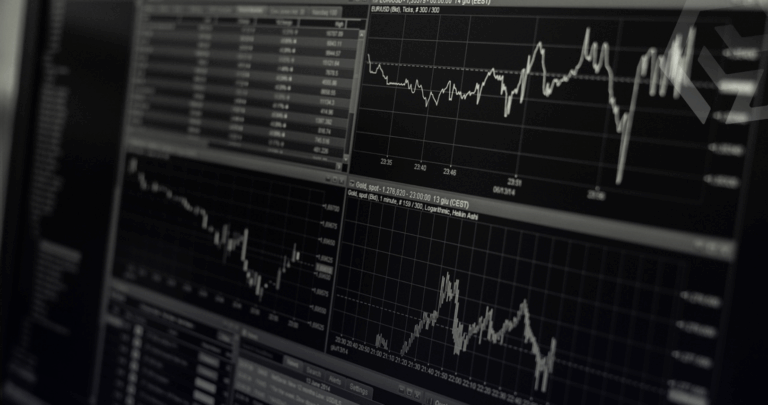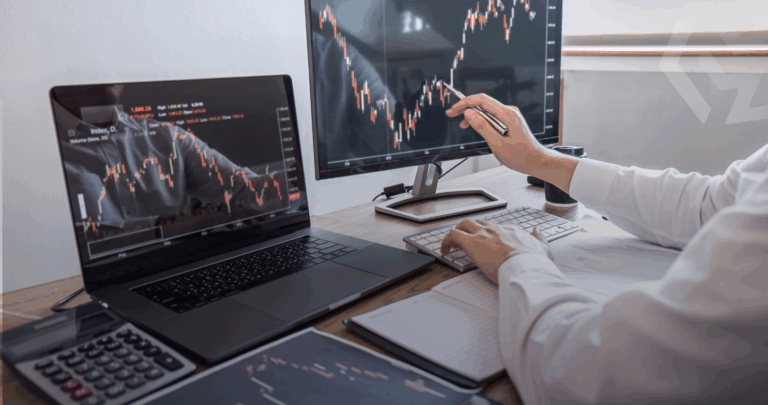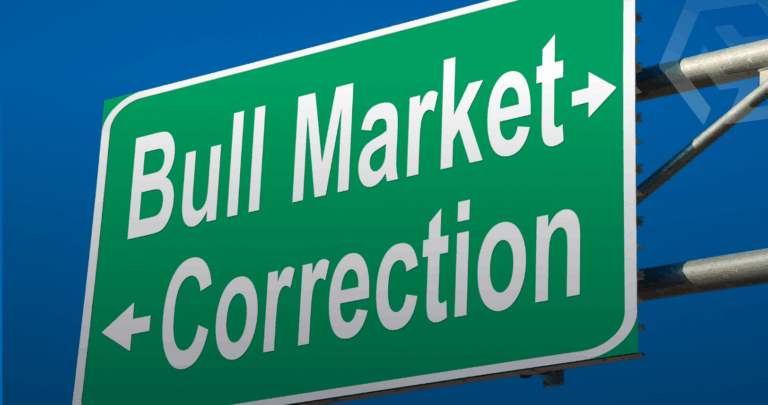Trading and investing are two ways to access financial markets: trading involves active speculation on the price of an asset, while investing consists in buying and holding assets. We’ll break down these concepts for new investors to better understand the available options.
What is investing?
Investing is when an individual or entity buys an asset and owns the rights to it. As a simple example, people have invested in gold, real estate, tulips, or even less popular assets like stamps, with the hope that the value of that asset will increase. In 2025, the same principles of investing apply, where investors purchase goods or securities. This means that a person who invests in a company, a rare-earth asset, or a stock owns a part of that asset.
People invest because they want to build wealth, and as we’ve seen, investment patterns can range from short-term to long-term. Data shows that approximately 30% of investors identify as short-term investors, while over 70% prefer a long-term investment strategy.
What is trading?
Trading is the process of buying and selling shares or an asset through digital means. When a person trades, they aim to make small or large profits in a shorter period, and they don’t always own the assets they trade outright.
Traders use different strategies and indicators to profit from sentiment, market direction, or volatility. At the end of the day, the goal is similar to investing: to generate profits and build wealth through strategies.
When someone trades, they use brokers and existing digital contracts to buy and sell shares or assets at a perceived value quickly. A trader uses charts and analysis to study the market and make informed decisions. Recently, trading has become automated using quantitative models to predict future prices.
Unlike investing, trading is an active process that requires constant monitoring and decision-making.
How tools differ for investing and trading
Investors and traders can use the same tools to study the market, but for investors, research is more important, while for traders, gauging the market is more important to better understand direction and short-term momentum.
Tools available to investors are accessible to everyone and are simpler than those traders use. For traders, a suite of products and tools, such as broker accounts, analysis tools, and more complex market sentiment tools, is required to build an overall understanding of the market.
What investment tools are there?
Investors primarily use tools that facilitate fundamental analysis and long-term portfolio tracking.
- Brokerage Accounts: Platforms like eToro, Binance, or Findelity are brokerage accounts where people can invest in digital assets such as stocks, bonds, and mutual funds. Investing can also be done physically, such as buying gold.
- Research Platforms: Search engines like Google are the primary source of information for investors. This can lead them to more explicit reports from companies that provide in-depth analysis of stocks and funds, including financial statements, analyst ratings, and industry reports.
- Portfolio Management Software: These tools are not always necessary, but they help investors centralize their investments. They keep track of their net worth, asset allocation, and performance.
What trading tools are there?
Traders need sophisticated platforms that provide real-time data and advanced charting capabilities.
- Trading Platforms: These are similar to broker accounts, allowing traders to access bonds, stocks, CFDs, ETFs, and similar products.
- Analytics Software: Online tools like TradingView are integrated with most online brokers and trading platforms. These help traders to access strategies, visualize indicators, and also create custom signals for their trades
- Automated Software: Trading algorithms are a new addition to the trading space and help traders remove emotion from their trading. They are more advanced and require trading knowledge to set up.
Trading vs. investing: which is better for beginners?
For most beginners, investing is a recommended starting point because it is lower risk than active trading. In trading, a person needs to monitor markets and understand strategies and theories to become profitable. Investing, as proven by Warren Buffett, can be profitable by following simple “buy and hold” strategies.
They are more forgiving and allow newcomers to learn how markets work, what it means to invest, and help assess their risk appetite. Investment vehicles like ETFs or index funds have been a reliable way to build wealth. Now they are integrated with traditional financial services, which makes them more accessible – this doesn’t mean they aren’t without risk.
In contrast, it demands significant time, knowledge, and emotional discipline. The learning curve is steep, and the risk of substantial losses is high. Successful trading can be a full-time job, requiring constant vigilance and a robust understanding of complex market dynamics.
How trading vs. investing are different
| Factor | Investing | Trading |
| Time Horizon | Long-term (years to decades) | Short-term (seconds to months) |
| Goal | Build wealth over time through compounding and appreciation. | Generate quick profits from market fluctuations. |
| Methodology | Fundamental analysis of an asset’s intrinsic value. | Technical analysis of price charts and market sentiment. |
| Risk Profile | Generally lower risk; value grows with the underlying asset. | Higher risk; relies on correctly predicting short-term price moves. |
| Activity Level | Passive. “Set it and forget it” or periodic contributions. | Active. Requires constant monitoring and frequent transactions. |
| Ownership | Direct ownership of the asset (e.g., shares of a company). | Often involves speculation without ownership |
What beginners should look out for
Beginners should first understand their level of understanding of financial markets and the risks involved before deciding whether to trade or invest. For some, trading has recently been likened to chance because they lack the technical knowledge to make informed decisions.
Before investing or trading, a person should first analyze their risk tolerance and emotional response to money. Some investors can manage risk better than others, without being emotionally driven. At the same time, it’s important to look for the hidden costs when trading or investing through online platforms.
Commissions help the platform stay afloat, and most new traders are unaware of how they impact their profits. Whether it’s platform fees, capital gains, or taxes, these can erode one’s profits.
Similarly important is understanding how diversification can play to one’s advantage. For new investors, diversification is less important, as they may be using smaller capital. However, once higher capital is allocated, adding a few more assets could help mitigate losses if one investment underperforms.
Finally, it’s important to manage risk and take a slow and steady approach. Too many times, new investors jump on high-yield opportunities. This often backfires, as they are unable to stomach volatility and respond emotionally to price swings. Opting for a lower interest yield over a longer period of time could prove beneficial.
Investors must scrutinize the platforms and assets they utilize. Protecting your existing capital should always take precedence over solely pursuing aggressive gains. As investing and trading become more mainstream, so too does the presence of bad actors.
Final words
The choice between trading and investing depends on financial goals, understanding of the financial markets, and risk tolerance. Becoming comfortable investing or trading comes down to the time one dedicates to understanding and learning about the market.
To make it easier to understand, investing is a more approachable way to access the financial markets, while trading is higher-stakes and more action-oriented. However, both approaches can be risky if investors take the wrong approach.
For those who are new to investing or simply want to diversify their portfolios, Yieldfund provides users with ways to invest in the crypto market without having to learn how to trade themselves. Yieldfund is a quantitative trading company that provides a hands-off approach to trading while providing yields of up to 60% depending on the chosen investment plan.
Frequently Asked Questions
Which is better: trading or investing?
It depends on the goal and level of financial market knowledge. However, investing is generally better for new investors as it has a gentler learning curve.
Which type of trading is most profitable?
There is no single profitable solution. Success in trading depends on skill, theory applications, emotions, and market conditions. Profitability or losses are the return of a function of the trader’s ability to execute their chosen strategy consistently.
Why do 90% of traders lose money?
90% are losing money because they are unable to follow through with their plan and are guided by emotions when making decisions. It also includes poor risk management and underestimating the impact of transaction costs and taxes.
Is day trading vs. investing better?
For most individuals, investing is better than day trading. Day trading is extremely demanding, requiring constant attention and a high tolerance for stress and risk. Long-term investing is a more passive strategy that has historically proven to be a reliable method for building wealth over time, without the need for constant market monitoring.
What is an investment strategy?
An investment strategy is a plan designed to guide an individual’s investment decisions over time, with the goal of achieving a specific financial objective while also helping them manage risk.


